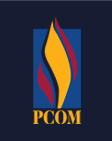Novel free-hand T1 pedicle screw method: Review of 44 consecutive cases
Document Type
Article
Publication Date
2014
Abstract
Summary of Background Data: Multilevel posterior cervical instrumented fusions are becoming more prevalent in current practice. Biomechanical characteristics of the cervicothoracic junction may necessitate extending the construct to upper thoracic segments. However, fixation in upper thoracic spine can be technically demanding owing to transitional anatomy while suboptimal placement facilitates vascular and neurologic complications. Thoracic instrumentation methods include free-hand, fluoroscopic guidance, and CT-based image guidance. However, fluoroscopy of upper thoracic spine is challenging secondary to vertebral geometry and patient positioning, while image-guided systems present substantial financial commitment and are not readily available at most centers. Additionally, imaging modalities increase radiation exposure to the patient and surgeon while potentially lengthening surgical time. Materials and Methods: Retrospective review of 44 consecutive patients undergoing a cervicothoracic fusion by a single surgeon using the novel free-hand T1 pedicle screw technique between June 2009 and November 2012. A starting point medial and cephalad to classic entry as well as new trajectory were utilized. No imaging modalities were employed during screw insertion. Postoperative CT scans were obtained on day 1. Screw accuracy was independently evaluated according to the Heary classification. Results: In total, 87 pedicle screws placed were at T1. Grade 1 placement occurred in 72 (82.8%) screws, Grade 2 in 4 (4.6%) screws and Grade 3 in 9 (10.3%) screws. All Grade 2 and 3 breaches were <2 mm except one Grade 3 screw breaching 2-4 mm laterally. Only two screws (2.3%) were noted to be Grade 4, both breaching medially by less than 2 mm. No new neurological deficits or returns to operating room took place postoperatively. Conclusions: This modification of the traditional starting point and trajectory at T1 is safe and effective. It attenuates additional bone removal or imaging modalities while maintaining a high rate of successful screw placement compared to historical controls. © 2014 Journal of Neurosciences in Rural Practice.
Publication Title
Journal of Neurosciences in Rural Practice
Volume
5
Issue
4
First Page
349
Last Page
354
Recommended Citation
Rivkin, Mark A.; Okun, J. F.; and Yocom, Steven S., "Novel free-hand T1 pedicle screw method: Review of 44 consecutive cases" (2014). PCOM Scholarly Works. 1492.
https://digitalcommons.pcom.edu/scholarly_papers/1492

Comments
This article was published in Journal of Neurosciences in Rural Practice, Volume 5, Issue 4, Pages 349-354.
The published version is available at http://dx.doi.org/10.4103/0976-3147.139974.Copyright © 2014.